Peter Dornauf – 14 September, 2015
Where winner takes all, a certain critical weight is placed on the victor and this year it went to Bronwyn Holloway-Smith with her mixed media installation, 'Pioneer City Flag.' It was a topical choice given the current debate about the New Zealand flag, but it wasn't a popular choice, even among the contestants. I've heard it described as something resembling a secondary school social studies project.
Hamilton
Group exhibition
National Contemporary Art Award
Selected and judged by Aaron Kreisler
18 July - 1 November 20015
Do contemporary art awards reflect the state of the nation or simply the state of the adjudicator’s mind? Perhaps it’s best to play safe and figure that it falls somewhere either side of both. This year’s judge, Aaron Kreisler (Head of Ilam School of Fine Arts) made an interesting observation about past judges having all come from the North Island. He was the first from the South, which is itself a curious phenomenon. Bias plays its part even at this level it would seem.
Casting an eye over the 52 selected works taken from 350 hopefuls, the largest percentage, in terms of their subject, were landscape based works, whether urban or otherwise. In terms of medium, photographically constructed pieces took the lion’s share, proportionally speaking. Political/social commentary came out ahead of all else. That sounds about right for things at this time, and in this country.
Where winner takes all, a certain critical weight was placed on the victor, and this year it went to Bronwyn Holloway-Smith with her mixed media installation, Pioneer City Flag. It was a topical choice given the current debate about the New Zealand flag, but it wasn’t a popular choice, even among the contestants. I’ve heard it described as something resembling a secondary school social studies project.
As always in competitions like this, where artists are on notice and a certain proportion - straining to be ‘uber-avant-garde’ - is evident in looking for that crucial edge, there were works that had a touch of gimmickry about them. But for the most part the pieces that made up the larger section of the show were clever, perceptive, innovative and knowing.
There was, however - and this is par for the course - a certain amount of straining when it came to the artist selling their work to the judge. The usual pretentious assertions appeared in artists’ statements, the ‘prize’ this year going to a brief that included the priceless phrase, “negates accessible reading”.
The winner for the most lucid, engaging and least pompous proclamation must go to Madeline Child and her work The Force. This was a large wall sculpture, made up of hollowed-out walnut twigs joined together by nylon cord, the whole structure configured roughly into the shape of a tree. Her artist’s statement bears reproducing in full.
Some new materials present themselves - (the neighbour prunes his walnut tree) - and you work out a bit of a technique (to do with holes) and while you and the dog are messing around (outside in the sun threading sticks) up surfaces a poem you used to know by heart (and could recite with your sister) and well, it just makes you wonder. It makes you wonder.
Memory, reclamation of fragments of the past and the mystery of time are all wrapped up in this simple poignant and nostalgic work possessed of a certain gravitas that referenced not only an abstracted tree, but suggesting the wired synapses of the brain that store the narratives of our lives.
I’m unaware of the poem referred to, but perhaps it might have been Merwin’s Elegy for a Walnut Tree, which begins:
Old friend now there is no one alive
Who remembers when you were young
It was a tree that had seen a lot of life, lived through wars and the absence of wars. Life itself, looking back, becomes one long elegy and Child captured that completely in both the work and in her simple but affecting brief.
It was also modestly priced, which couldn’t be said for many of the other works on the wall, the most outrageous of which was a piece of framed paper inscribed with a short typed sentence and yours for a ‘modest’ $10,366. However, in this case, an exception needed to be made given that the sentence read, ONLY 10366 DAYS SINCE THE END OF CAPITALISM. A rebuke to all the other entrants.
The question of “non-places” came up a number of times. Indeed the identical phrase coincidentally was used in statements by two different artists. Lisa Chandler’s Time is money efficiency is life, included the expression in her statement that accompanied a painting depicting a generic urban shopping mall possessed of all the characterless features such facilities display. A photographic inkjet print by Brendon Sellar (SPACE/Rock) worked the same trope with an image taken from somewhere on the outskirts of a city, featuring an absurdly large piece of rock hauled into position on a support system in some rundown isolated spot. Post-industrial decline is evoked.
Heather Hayward did something of the same in her video piece, Les Mills Gym, capturing at a high oblique angle a group of exercise bunnies, two stories up in the evening, doing their manic workout routines. But the steep camera angle simultaneously picked out the street below and the occasional passer-by treading their way home. Two distinct and contrary worlds were hereby juxtaposed - the one patently contrived, the other banal but real. The disconnect between the two was cleverly exposed. One was reminded of Edward Hopper’s voyeuristic stratagem.
There seemed to be a good number of direct art historical quotations made this year. McCahon, Joseph Beuys, Gerhard Richter, Morris Louis are invoked and others more indirectly - Miro, Twombly, Clairmont, Rothko.
Rohan Hartley Mills did a clever satirical mash-up of Louis and a cheeky flower arrangement complete with 3D ersatz table, in Painting aux parergon. Catherine Fooks played a similar adroit trick in her work, The Big Lebowski, calling on Rothko or Gretchen Albrecht with her drenched colour field work on an old worn carpet. Wickedly astute.
Colour, sopping, saturated and cranked into an ever multiplying diverse range of forms was the adroit creation of Kyle Sattler who in, Evolving algorithms within paint and colour, fused the mediums of paint and video to produce a rich world of abstract shapes morphing continually before one’s eyes. It was like some animated cartoon gone AWOL but in the best possible sense. A sumptuous feast for the senses.
Such allusions continued with Roger Mortimer in Port Nicholson, doing his allegorical trick where Dante meets Aotearoa, again. Kay McGarva called on Dennis Glover in her massive canvas, Landfall, with its rendition of mountains resembling a crumpled bed, while Imogen Taylor revisited cubism with a hint of deco in Body language.
Of the performance pieces, the collaborative work of Thomas Hinton and Karl Bayly took a sly look at history and post-colonial matters by presenting a tethered kayak on the Waikato River and calling it, You can’t blame an empty kayak. The kayak in question was in situ for the first two weeks of the show. Freudian self-analysis was conducted by Louise Lever, in her self-reflexive I Repress You You Repress Me, and Gaby Montejo’s milk fight, complete with costumed cow, may or may not have had political overtones, a la Fonterra.
Overall a great show that deserved time spent looking and close attention. The range of work had something for everyone and that’s meant that in the nicest possible way.
Peter Dornauf
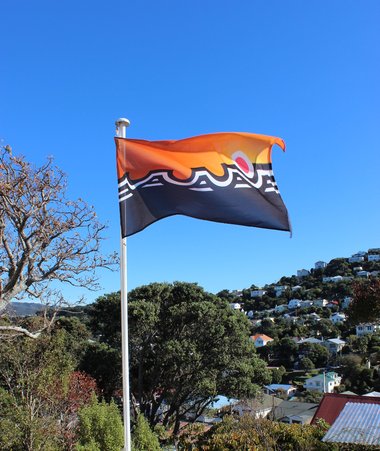

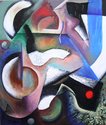
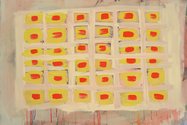
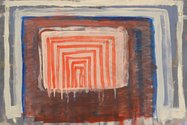
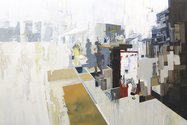
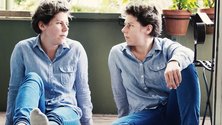
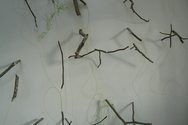
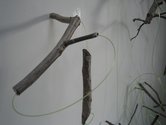
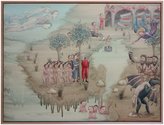
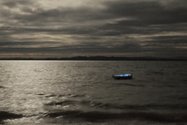

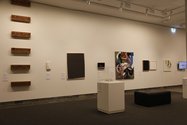
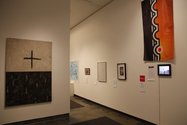
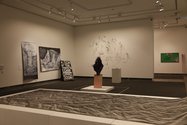
 Advertising in this column
Advertising in this column Two Rooms presents a program of residencies and projects
Two Rooms presents a program of residencies and projects
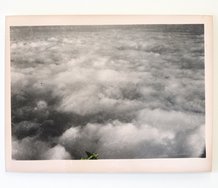
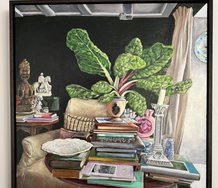
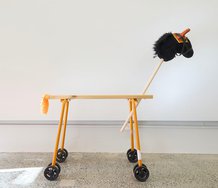
This Discussion has 0 comments.
Comment
Participate
Register to Participate.
Sign in
Sign in to an existing account.